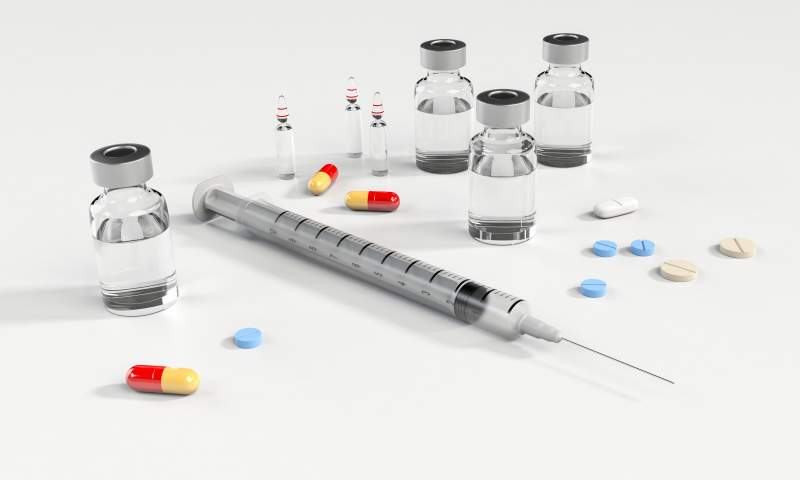Being a professional athlete may seem like a glamorous job, but a lot of long days and grueling nights come into play in order to win tournaments and sporting events. Even the training itself is exhausting, but necessary, nonetheless. That is why many athletes and sports enthusiasts try different methods to keep themselves in shape and improve their overall athletic performance.
Here are a few tips on how you can maintain your perfect form.
1. Diet
 Aside from consuming food that is good for your muscles and bones, research has pointed out the benefits of sticking to a Mediterranean diet. This diet typically comprises of fruits, vegetables, whole grains, nuts, seeds, and olive oil, with moderate consumption of fish, dairy, and red wine. All of these have been found to contain antioxidants and nitrates, as well as anti-inflammatory and alkalizing properties.
Aside from consuming food that is good for your muscles and bones, research has pointed out the benefits of sticking to a Mediterranean diet. This diet typically comprises of fruits, vegetables, whole grains, nuts, seeds, and olive oil, with moderate consumption of fish, dairy, and red wine. All of these have been found to contain antioxidants and nitrates, as well as anti-inflammatory and alkalizing properties.
According to a study published in the Journal of the American College of Nutrition, observing the diet four days in a week is already enough to boost endurance. In addition, cardioprotective effects can help stave off chronic disease.
However, there are also certain food that you should avoid.
- Sports Drinks: Drinking water, green tea, or juice is enough to keep you hydrated
- Soda: Drink club soda garnished with citrus or juice spritzers made with juice and club soda instead
- Protein and Energy Bars: A piece of fruit and a hand full of nuts are good alternatives
- Saturated and Trans Fats: Go for the healthy fats in nuts, seeds, avocados, seafood, olive oil, and peanut oil
- Carbohydrates
- Fiber: Swap it for whole, unprocessed foods like oatmeal, raisins, or peanut butter
- Caffeine: Limit it to 300 milligrams a day
- Alcohol
2. Strategize Workout Routine
 Whether you’re a seasoned athlete or a newcomer in the game, there is an apt workout for you to improve your athletic performance.
Whether you’re a seasoned athlete or a newcomer in the game, there is an apt workout for you to improve your athletic performance.
For newbies:
Start with a fitness and nutrition plan for three months. A 28-minute workout is typical—break it down into arms and abs for core strength, and legs and full body, focusing on a different muscle group every day. Combine weight training and cardio—not forgetting your simple stretching routine—with the right meal plan to make the program more effective.
For professionals:
Do strength training outdoors, using little to no equipment. Keep doing bodyweight training until you reach muscle failure, or until your muscles are exhausted that it cannot complete another round. For cardiovascular exercise, run at least 2 miles a day while doing interval training of sprints or changes in incline. The goals are to cover more distance and doing it at a faster pace every time. Strength and cardio training should be done alternately, with cardio usually taking three days.
3. Respiratory Muscle Exercise
 Training your respiratory muscles (known as Respiratory Muscle Training or RMT) means improving the function of the respiratory muscles through specific exercises and techniques. These steps, including breathing exercises, can increase the strength and endurance of the respiratory muscles for better oxygen circulation. Since the amount of lung capacity used improves, more oxygen can enter the bloodstream.
Training your respiratory muscles (known as Respiratory Muscle Training or RMT) means improving the function of the respiratory muscles through specific exercises and techniques. These steps, including breathing exercises, can increase the strength and endurance of the respiratory muscles for better oxygen circulation. Since the amount of lung capacity used improves, more oxygen can enter the bloodstream.
Asthma, bronchitis, emphysema, and COPD patients usually undergo RMT, but there are also those who adopt this as part of their sports training to strengthen the muscles used for breathing. Studies have proven that RMT can increase a person’s endurance during cardiovascular exercise or sports activities.
There are also breathing therapy techniques that can help in relieving stress and meditation, aside from boosting athletic performance. These techniques are helpful for long-distance runners as they can delay the release of lactic acid into the bloodstream, extending the athlete’s performance. British swimmer Michael Jamieson, who won silver at the 2012 Olympics in London, reportedly used this method.
4. Hydration
 Fluid intake also significantly influences athletes’ peak performance. However, there may be conflicting advice as to how much water they should drink in the first place. To begin with, you should understand that fluid is lost due to the exercise’s intensity, sweating, temperature, and altitude.
Fluid intake also significantly influences athletes’ peak performance. However, there may be conflicting advice as to how much water they should drink in the first place. To begin with, you should understand that fluid is lost due to the exercise’s intensity, sweating, temperature, and altitude.
A rule of thumb to know how much water you should intake is to divide your body weight in half and drink an ounce of water per pound of weight throughout the day. For example, someone weighing 150 lbs. should drink 75 oz. of water. A simpler way is to drink water eight times throughout the day using a big glass.
But remember, this amount is subject for adjustment depending on your activity level and outside temperature for the day. You can also follow this guide during your high-activity days:
- Before exercise: 16 oz. two hours before and another 8–16 oz. right before
- During exercise: 4–6 oz. every 15–20 minutes; decrease the amount slightly if you’re doing less vigorous exercise
- After exercise: 16–24 oz. for every pound lost; you can also drink fruit smoothies or eat fruits and vegetables to replace lost fluids and electrolytes
5. Medical Procedures or Performance Enhancing Supplements
 A performance-enhancing supplement is something added to the diet of an athlete to make up for a nutritional deficiency. The more common are vitamins, amino acids, minerals, herbs and other botanicals.
A performance-enhancing supplement is something added to the diet of an athlete to make up for a nutritional deficiency. The more common are vitamins, amino acids, minerals, herbs and other botanicals.
Dietary supplements are not required to meet any Food and Drug Administration (FDA) standards. In addition, the FDA is prohibited from removing any product from the market unless there’s proof that it can cause medical problems. That is why the health risks of some supplements are discovered only after the product is on the market.
Ergogenic aids, meanwhile, consist of substance, drugs, procedures, and devices that are used to improve athletic performance. Some of these are readily available and legal, but there are other manufactured or illegal products that are banned by sporting organizations. You have to learn more about these aids before getting into it, and that includes the risks entailed.
One of the more common medical procedures done by athletes that even an average Joe can take part in is the Human Growth Hormone (HGH) hormone therapy. For athletes who may be having a hard time getting back on fighting shape, having an HGH injection is an option because it promotes bone and muscle growth, tissue repair, and a healthy heart.
Like other hormones, the body can produce HGH, but many adults may start to feel the decline of its production once they hit their late 20s. An Endocrinologist or specialized HGH doctor may prescribe HGH injections, but make sure to consult a physician beforehand.
Conclusion
Your career as an athlete relies heavily on your well-being. Your health may just be a more important factor in enhancing your athletic performance. If you’re looking for ways to become a better athlete, being on the pink of health—preferably through steps mentioned above—is the first step.
Author Bio
Melissa Yanovych is the Director of Marketing at Ehormones, an age management medicine company based in West Palm Beach, California. An advocate of living a healthy and active lifestyle, Melissa’s advocacy focuses on raising awareness and consciousness when it comes to health and wellness.

 Melissa Yanovych is the Director of Marketing at Ehormones, an age management medicine company based in West Palm Beach, California. An advocate of living a healthy and active lifestyle, Melissa’s advocacy focuses on raising awareness and consciousness when it comes to health and wellness.
Melissa Yanovych is the Director of Marketing at Ehormones, an age management medicine company based in West Palm Beach, California. An advocate of living a healthy and active lifestyle, Melissa’s advocacy focuses on raising awareness and consciousness when it comes to health and wellness.